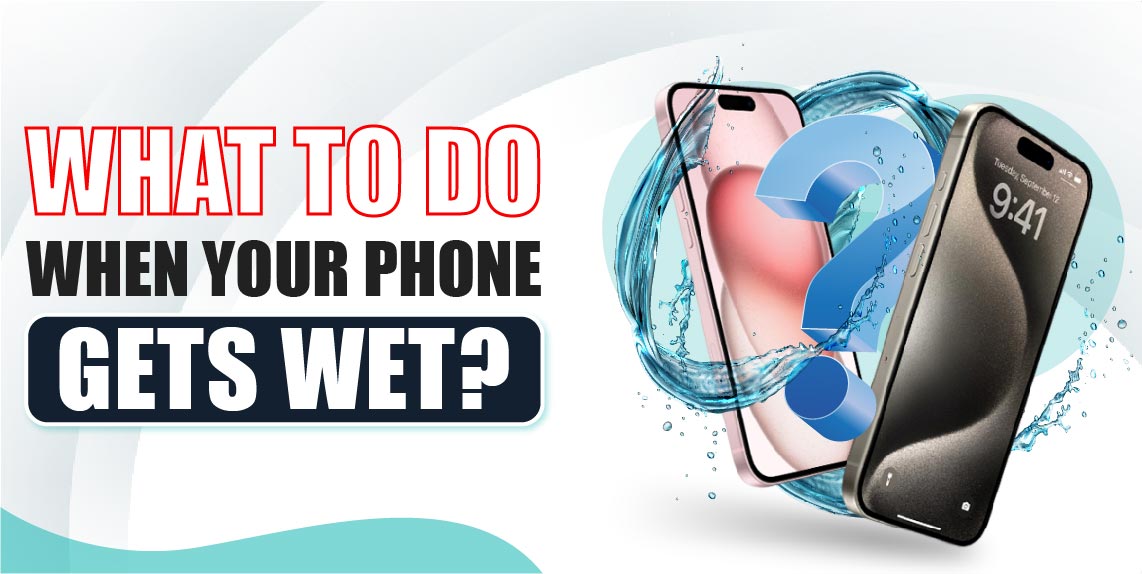
Discovering that your phone has been exposed to water can be a panic-inducing moment. Whether it slipped into the sink, took an unexpected dip in the pool, or got caught in a rainstorm, acting quickly and correctly can make all the difference in saving your device.
Here’s a comprehensive guide on what to do when your phone gets wet to maximize the chances of recovery and minimize potential damage.
1. Act Quickly
The first and most crucial step is to get your phone back from the water as soon as possible. The longer it remains submerged, the greater the risk of water seeping into internal components and causing irreparable damage. Do not wait or hesitate; swift action is key.
2. Power Off Immediately
If your phone is still powered on after exposure to water, power it off immediately. Water and electricity do not mix well and can lead to short circuits and further damage. If the phone has already turned off on its own due to water exposure, do not attempt to turn it back on.
3. Remove External Accessories and SIM Card
Remove any protective cases, covers, or accessories from the phone. Take out the SIM card and any other removable components to prevent water from seeping into the internal circuitry through openings such as the SIM card slot or charging port.
4. Dry the Exterior
Gently wipe down the exterior of the phone with a soft, absorbent cloth or towel to remove any visible moisture. Be cautious not to push water further into the device's openings.
5. Avoid Heat Sources
While it may be tempting to use a hairdryer or place your phone near a heat source to speed up the drying process, avoid doing so. Heat can damage the internal components of your phone, especially delicate parts like the screen and battery.
6. Use Absorbent Materials
Place your phone on a clean, dry cloth or paper towel to absorb moisture. You can also use uncooked rice, silica gel packets, or other desiccants to help draw out moisture from the device. Seal the phone and desiccants in an airtight container or bag to enhance the drying process.
7. Patience is Key
Allow your phone to dry naturally for at least 24 to 48 hours before attempting to power it on again. It may be tempting to check if the phone is working sooner, but patience during the drying process can significantly increase the likelihood of a successful recovery.
8. Test the Phone
After the drying period, reinsert the SIM card and attempt to power on your phone. If it powers on without any issues and functions normally, congratulations! Your quick actions and careful drying techniques likely saved your phone.
9. Seek Professional Help if Needed
If your phone does not power on or exhibits abnormal behavior after drying, it may require professional assistance. Contact a reputable repair service like TechCity that is experienced in water damage repair. Avoid attempting to disassemble or repair the phone yourself, as this could void warranty or further damage the device.
Invest in Waterproof Accessories: Besides waterproof cases or pouches, consider using screen protectors that offer water-resistant features. These can provide an extra layer of protection against accidental splashes or moisture exposure.
Use a Floating Strap or Lanyard: If you frequently use your phone near water, such as during water sports or activities by the pool, attach a floating strap or lanyard. These accessories can prevent your phone from sinking if accidentally dropped into water.
Store Your Phone Securely: When not in use, store your phone in a safe and secure location away from potential water hazards. Avoid placing it near the edge of sinks, countertops, or tables where it could easily be knocked into water.
Be Cautious in Wet Environments: Exercise caution when using your phone in humid or wet environments, such as bathrooms or kitchens. Moisture from steam or condensation can potentially seep into your phone's internal components over time.
Keep Your Phone Away from Rain: When outdoors during rainy weather, protect your phone by storing it in a waterproof bag or pouch. If no protective covering is available, consider keeping your phone in a secure pocket or inside your bag to shield it from raindrops.
Regularly Inspect and Maintain Waterproof Seals: If your phone or its case has waterproof seals, inspect them regularly for any signs of wear or damage. Replace seals as needed to ensure continued protection against water intrusion.
Educate Family Members and Children: Teach family members, especially children, about the importance of keeping phones away from water sources and using protective accessories when necessary. Encourage responsible handling of electronic devices to minimize accidents.
Use Water-Resistant Bluetooth Headphones: If you enjoy listening to music or making calls while exercising or in wet conditions, consider investing in water-resistant Bluetooth headphones. These can allow you to enjoy your phone's features without risking water damage to the device itself.
Backup Important Data: Regularly backup important data, such as contacts, photos, and documents, to cloud storage or an external device. In the event of water damage or other unforeseen circumstances, having a backup ensures that you can easily recover your information.
Experiencing water damage to your phone can be stressful, but by following these steps promptly and correctly, you can increase the chances of saving your device and minimizing potential long-term damage. Acting quickly, powering off the phone, removing accessories, and allowing it to dry naturally are critical steps in the process. Remember, prevention is always better than cure, so take precautions to protect your phone from water exposure in the future. If all else fails, seek professional assistance to assess and repair any damage. With proper care and quick action, your phone can often be restored to full functionality after a water mishap.